Fix These Problems Now to Avoid a Costly ADA Lawsuit
Posted on September 13, 2018 by Rafael CantilloLawsuits are never fun. ADA lawsuits are often faced by parking lot and building managers, but much of the time the problem is something which could have been easily fixed. Simple repairs can save you tens of thousands of dollars. Here are some of the things you need to look at:
Signage
Signage is one of the cheapest ADA features to fix, but often overlooked. Make sure that all disabled spaces have the international symbol of accessibility. Van accessible spaces should be clearly marked as such, with the phrase "van-accessible." You can either get one sign that includes both or two separate signs, whichever works best (if you only have a smaller number of van-accessible spaces, the separate sign can be cheaper). Bent or unreadable signs should be replaced as soon as possible.
Make sure that the lower edge of sign is at least five feet above the ground (when wall mounted) and at least 80" from the ground when post mounted, so as to ensure that it is visible to people driving vans, trucks, or SUVs. It is also important to indicate accessible routes into the building with clear signage that is in good condition.
Also, be sure to have a have a R100-B disabled parking tow away sign at each entrance of your parking lot.
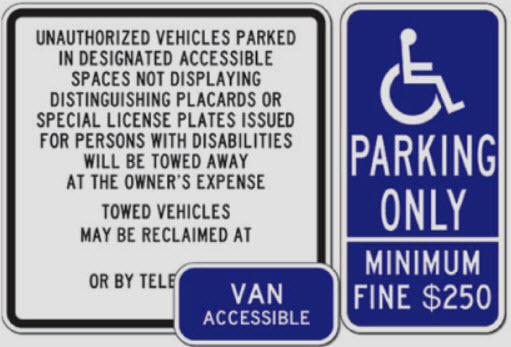
Striping
If people cannot see the striping that marks loading zones between disabled spaces then there is a much higher risk that somebody will, for example, park a motorcycle on it. Repaint striping regularly. When you do, make sure that the spaces are still compliant. You should also repaint striping if you discover it is less than the minimum required width or does not cover the entire length of the space.
Bear in mind that you need a certain minimum number of accessible spaces in your parking lot, and even more for healthcare facilities. The number has changed a lot since 1991, so if you have a lot that has not been fully re-striped since then, it is highly likely you are out of compliance and should add more spaces. The spaces should always be as close as possible to an accessible entrance.
It is often recommended to make all accessible spaces van accessible, which can be done by putting an eight foot access aisle or by widening the spaces. Angled spaces can be a problem for accessibility and require that access aisles be separate for each space instead of being shared between two spaces. You should avoid angling accessible spaces when possible.
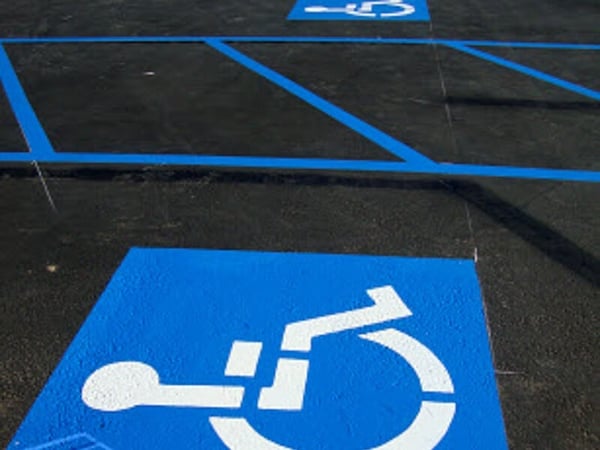
Damaged Asphalt
Damaged asphalt can easily bring ADA parking spaces out of code. For example, if there is a pothole in a parking stall or cross hatched area it can drop the level of the access aisle below that of the space, then it is no longer in compliance and the asphalt needs to be patched. You should always prioritize patching potholes in disabled spaces, access aisles or disabled access routes. A tiny pothole can be a huge problem for a wheelchair.
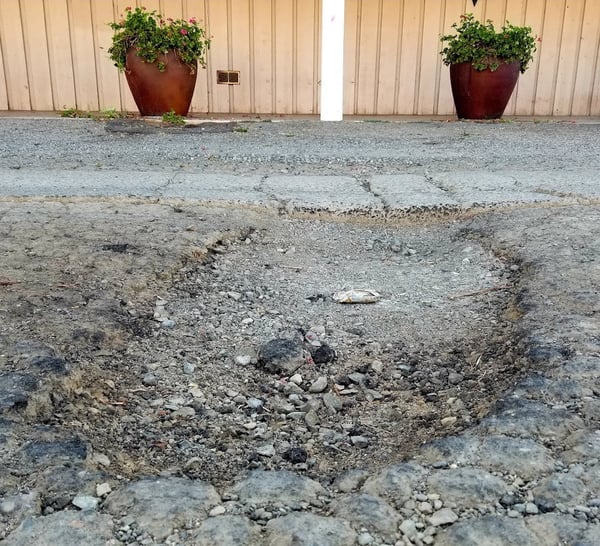
Access Routes
The access route also needs to be compliant. Ramps should be free of potholes, ruts or cracks and should have a slope of less than 1:12. Ideally, ramps should have the least possible slope, although redesigning may not be possible. However, you can make sure that the surface is "firm, stable, and slip resistant," that edge protection is not worn and that handrails are in good condition, not broken, and can be used. When replacing handrails, look for ADA compliant materials and make sure the height is 34 to 38 inches. Adding a second lower handrail should be considered for residential buildings and any others that might have a lot of children around.
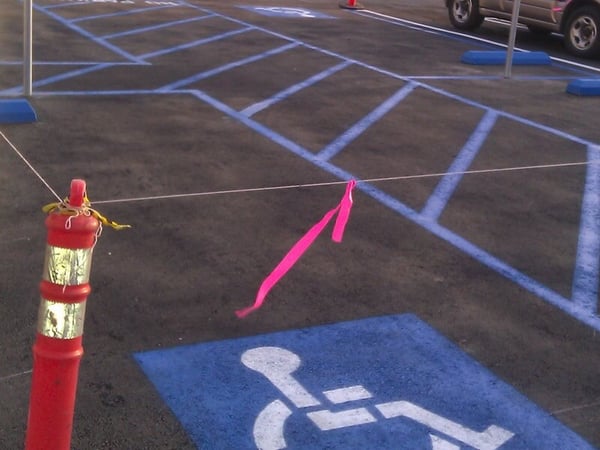
Curb Ramps
Curb ramps or curb cuts should be present at any intersections (such as the entrance). Technically, they're only required on new or "altered" streets, but resurfacing your lot could be seen as "altered." Curb ramps are also needed next to the access aisles of accessible spaces and on the direct route to all building entrances. Curb ramps should be at least 48" wide, and 60" is better. Bear in mind that curb cuts are also useful for people pushing carts or strollers.
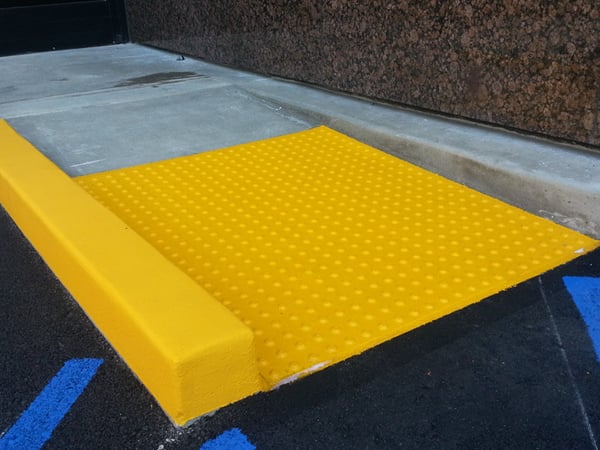
Passenger Loading Zones
Although it is not technically required unless you offer valet parking or have a mechanical access garage, an accessible passenger loading zone at a drop-off or pick-up area will help cover you from complaints. This means that there should be a marked area for accessible vans, with signage to help keep other vehicles clear enough to allow for wheelchair transfer.
Charging Stations
There are as yet no standards for accessibility on EV charging stations. One rather unfortunate rule is that accessible charging spaces do not count towards the minimum requirements. It's advisable, although not required, to make some of your EV charging stations accessible spaces. They should only be marked as accessible if you are reserving them for the use of disabled people specifically.
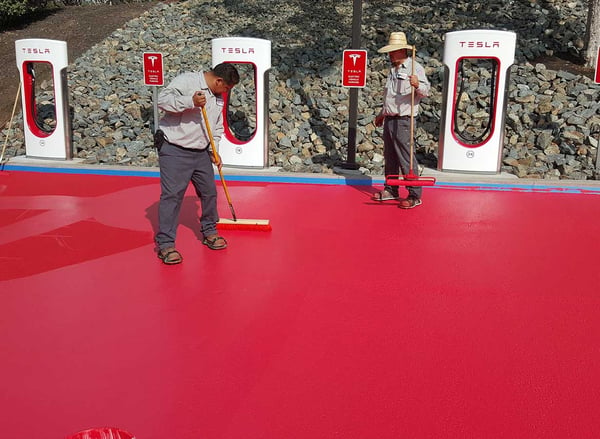
Final Thoughts
Keeping your parking lot compliant is always going to be cheaper and less hassle than fielding a lawsuit. Many of the common problems are cheap to fix. Others are more work, but are still easier than dealing with the problems that come from not complying. These can include large fines, civil settlements, and time spent dealing with the court case rather than your regular business.



Comments